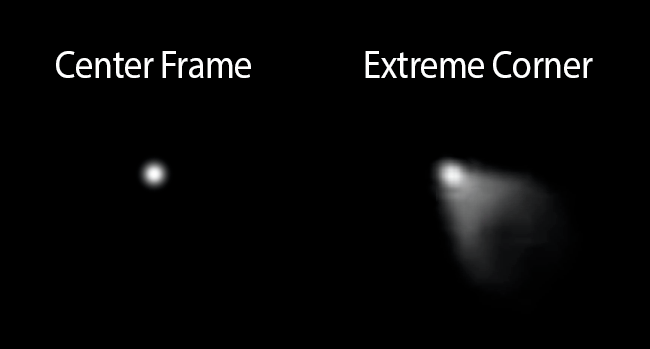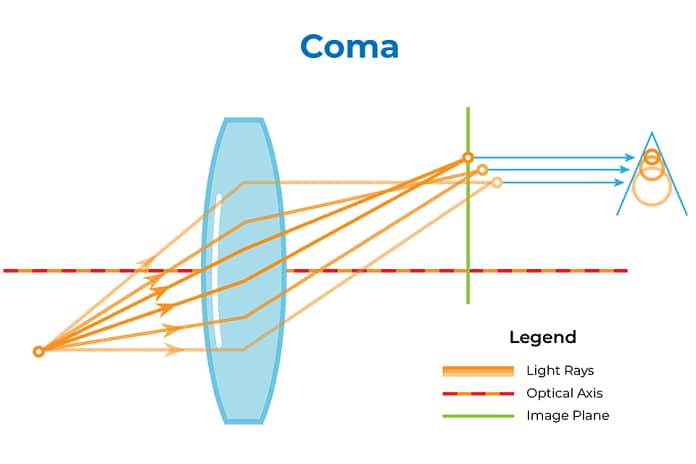Lenses that exhibit heavy coma can show bright, sharp points of light in the center of the frame, which become significantly blurrier towards the edges of the frame. This can be clearly observed when photographing the night sky, with stars appearing like dots in the center, but taking the form of a comet in the corners:

Comatic aberration can be both positive and negative, depending on whether it extends away from the optical axis or towards it.
Coma in Lenses
Coma is a relatively common problem on telescopes, microscopes and photographic lenses, and it is often most visible at wide lens apertures. Unlike chromatic aberration, coma damages an image permanently, and it cannot be fixed via post-processing software. It is therefore important to pick lenses that have been properly designed to exhibit minimum coma.
It is also critical to test lenses and make sure that they are not de-centered. Lens decentering can lead to more pronounced levels of aberrations in images, including coma.
Although some lenses are known to exhibit comatic aberration, most modern photographic lenses suffer more from other forms of aberration such as astigmatism, or have a combination of different aberrations. As a result, many photographers mistakenly label all non-circular shapes at the edges of the frame as the result of poor “coma” handling by the lens. In reality, coma is somewhat rare to see in modern lenses, because many of them are designed with corrective elements to reduce coma.
Coma performance of a lens becomes increasingly important when taking pictures of the night sky. Since all stars are small points of light when properly focused, they can be rendered as cones / comets towards the edges of the frame, especially at wide apertures such as f/1.4 or f/2.8.
How to Reduce Coma
Other than changing the lens to one with better coma performance characteristics, the only thing that can be done in the field to reduce coma, is to stop the lens down to a smaller aperture. Stopping down the lens allows aperture blades to block light rays coming from the outer edges of spherical lenses, which essentially reduces comatic aberration.
For example, if a lens shows heavy coma at f/1.4, stopping down the lens to something like f/2.0 or f/2.8 can dramatically improve its coma performance. This might not be always practical in the field, since it also increases exposure time (not ideal for astrophotography), but it works.
If you are interested in reading more, below is the list of articles on other types of aberrations and issues that we have previously published on The Photographers:




